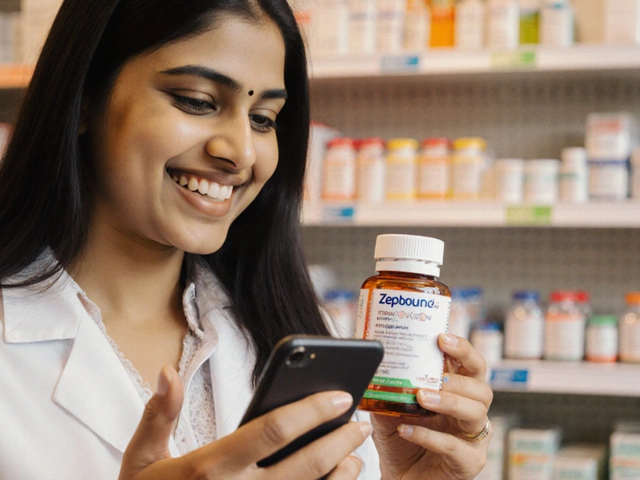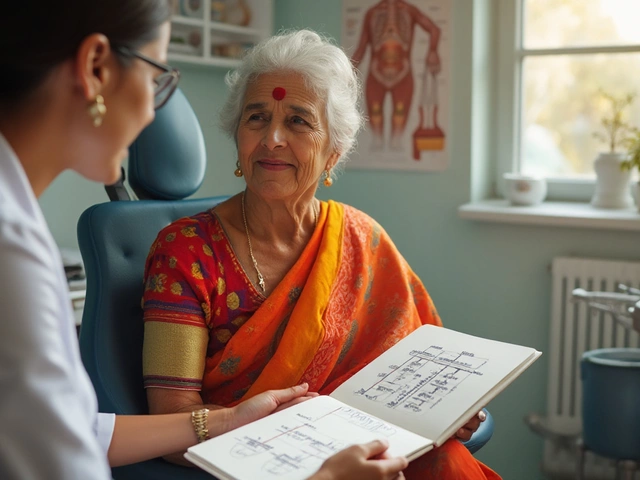Safest Diabetic Medication: What Makes a Diabetes Drug Truly Safe?
When talking about safest diabetic medication, a drug that controls blood sugar with minimal side effects and low complication risk. Also known as most secure diabetes treatment, it aims to keep glucose in check without harming kidneys, heart or causing dangerous lows. Metformin, the first‑line biguanide used by millions worldwide and Ozempic, a GLP‑1 receptor agonist popular for both glucose control and weight loss are two of the most discussed candidates when safety is the top priority. Understanding how these medicines interact with your body helps you decide which one fits your health profile.
Key Factors That Define a Safe Diabetes Drug
Safety isn’t a single feature; it’s a bundle of attributes. First, a low risk of hypoglycemia is essential. Drugs that trigger sudden drops in blood sugar can lead to dizziness, seizures, or even accidents. Second, the impact on kidney function matters because many diabetics already have reduced renal performance. Third, cardiovascular effects play a big role—some medicines lower heart‑attack risk while others may increase it. Lastly, the side‑effect profile, including gastrointestinal upset or weight gain, rounds out the safety picture. Together, these criteria form a checklist that clinicians use to rank a medication’s overall safety.
For example, safest diabetic medication often means choosing a drug with a proven track record in large, diverse populations. Metformin checks the hypoglycemia box—its mechanism doesn’t cause insulin spikes—so sudden lows are rare. However, it does require regular kidney monitoring because it’s cleared through the kidneys. Ozempic, on the other hand, offers strong glucose control and weight loss benefits, but it can cause nausea and may not be suitable for patients with a history of pancreatitis.
Another crucial piece is drug‑drug interaction potential. Many diabetics take antihypertensives, cholesterol meds, or anticoagulants. A safe diabetes drug should play nicely with these other prescriptions. Metformin has relatively few interactions, while some GLP‑1 agonists can affect the absorption of oral medications due to delayed gastric emptying. Knowing these nuances helps avoid unexpected side effects and keeps your overall treatment plan smooth.
Cost and accessibility also influence safety indirectly. A medication that’s too expensive may lead patients to skip doses, undermining both efficacy and safety. Programs that lower the price of Ozempic or Zepbound, for instance, make these options more realistic for a broader audience. When a drug is affordable, adherence improves, and the risk of complications drops.
Real‑world evidence from large registries backs up many of these points. Studies show that long‑term Metformin users have lower mortality rates and fewer cardiovascular events compared to those on sulfonylureas. Meanwhile, recent GLP‑1 trials report significant reductions in major adverse cardiac events, but they also note higher rates of gastrointestinal complaints. Balancing these findings against personal health goals is the heart of choosing the safest path.
Patient lifestyle is another dimension. If you’re active and watch your diet, a medication that modestly reduces blood sugar without extra weight gain might be ideal. Conversely, if weight loss is a primary goal, a GLP‑1 like Ozempic can serve dual purposes, provided you can handle the occasional nausea. Discussing daily routines with your doctor ensures the drug’s safety profile aligns with how you live.
Lastly, monitoring protocols can tip the safety scale. Metformin users often undergo quarterly eGFR checks to gauge kidney health. Ozempic users may have baseline pancreas imaging and periodic liver function tests. Knowing the required follow‑up helps you stay proactive and catch any issues early, which is a hallmark of a truly safe medication strategy.
All these elements—hypoglycemia risk, kidney impact, cardiovascular safety, side‑effect load, interactions, cost, lifestyle fit, and monitoring—intertwine to define what makes a diabetes drug the safest choice for you. Below, you’ll find articles that dive deeper into each of these topics, from Metformin’s kidney considerations to Ozempic’s weight‑loss benefits and the latest low‑cost options for GLP‑1 therapies. Use them as a roadmap to navigate the many options and land on the medication that best protects your health.

Safest Diabetic Medication: What You Need To Know First
Picking the safest diabetic medication can feel like trying to solve a tricky puzzle, but some choices stand out more than others. This article gets straight into which diabetes medicines are safer, what makes them different, and what to watch out for. You’ll find honest facts about side effects, long-term risks, and tips for talking with your doctor. We’ll break things down so it doesn’t feel overwhelming and steer clear of scary medical jargon. Here’s what you need to know to make the best decision for your health right now.
read more



